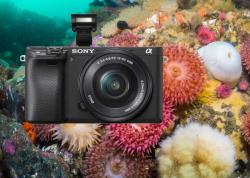How to Fire Your Underwater Strobes

The terminology, method, and discussion around firing underwater strobes is needlessly complicated. There are also many misconceptions regarding what method for firing a strobe is "best." The goal of this article is to dispel any myths and explain the science and terminology behind strobe triggering in simple terms. At the Underwater Photography Guide, we have had the opportunity to test more methods of strobe triggering for more types of cameras than any other players in the industry. After our wide range of experiences, it's clear to us that there is no best method to trigger a strobe. Everything depends on your camera, your housing, and your strobe. That's why it's very important to talk to a knowledgeable underwater camera store like Bluewater Photo who can point you in the best direction to trigger your personal strobes of choice. Feel free to reach out to them anytime to discuss your triggering needs at sales@bluewaterphotostore.com.
How to Trigger an Underwater Strobe
Underwater strobes fire when an optical (i.e., light) or electric signal is emitted from a camera inside a housing and is detected by a sensor on the strobe. Whether the signal coming from the camera is an optical (light) or electric signal determines the method of triggering. There are two main methods/cables used to connect a camera to an underwater strobe:
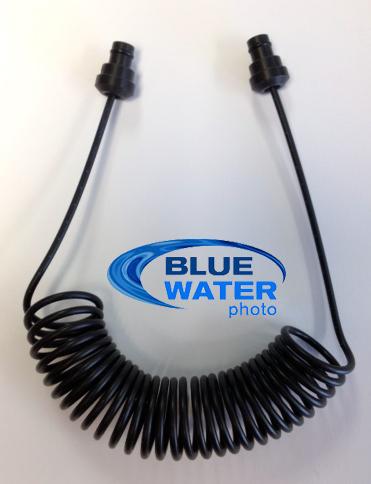
1. Fiber Optic Cables
When fiber optic cables connect a camera to a strobe, the signal used is an optical (light) signal. The optical signal is literally the flash that comes from your camera. The flash is emitted when you take a photo, and it travels through a glass or plastic window on your housing. The fiber optic cable is attached to this small window using a screw cap or a rubber plug. It is also attached to an optical sensor on your strobe on the other end. The light travels through the cable and reaches the sensor on the strobe, causing it to fire.
What Emits the Optical Signal?
The signal when using fiber optic cables comes from the onboard flash on the camera or from a device called a flash trigger.
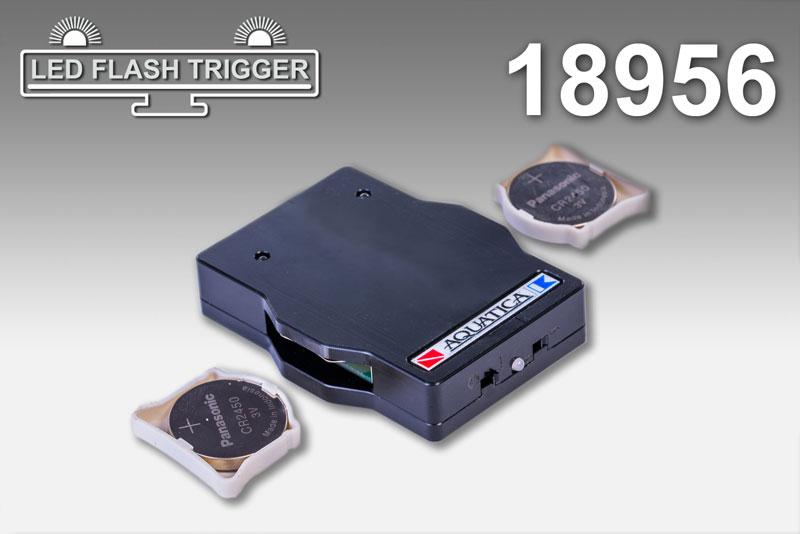
What is a Flash Trigger?
A flash trigger is a device that attaches to your camera's hotshoe and emits LED light every time you press the shutter on your camera like a flash would. Flash triggers are placed inside your housing and can trigger your strobe via fiber optic cables.
Why Use a Flash Trigger?
People use flash triggers if their camera does not have a built in flash, or if they want to speed up the recycle time between shots. All on-board camera flashes have a recycle time, the same way strobes have a recycle time. So when you use your pop up flash to fire your strobes, the camera has to wait for the capacitor in the flash to charge. With a flash trigger, you don't have to wait for the capacitor to charge because there is a separate battery back in the flash trigger. This means you can fire at much faster speeds with a flash trigger. When you use a flash trigger, you become limited by the recycle time of the strobe and not the recycle time of the camera. Many compact shooters that use pop up flashes are limited by the recycle time of their flash. Be aware that your camera needs to have a hotshoe in order to use a flash trigger.
Pros of Fiber Optic Cables
- There is no risk of flooding from the cable since they attach externally
- Quick shooting speeds with a flash trigger
- Small and lightweight
- No need to lubricate any orings
Cons of Fiber Optic Cables
- Slower shooting speeds limited by camera flash recycle times if you are not using a flash cable
- TTL tends to be less accurate than electronic sync cords with a TTL converter
- Easier to break than electronic sync cords
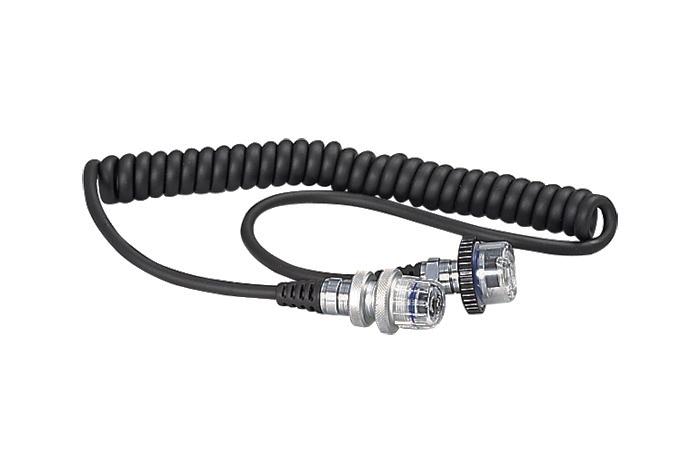
2. Electronic Sync Cords
When electronic sync cords connect a camera to a strobe, the signal used is an electric signal. The electronic signal is emitted from the hotshoe of your camera when you press the shutter button on your camera. If you had a speedlight, this would fire the speedlight. But for underwater photography, this signal is carried via a cord to a hole in the housing called a "bulkhead." This hole is protected from floods via an o-ring seal. From there the signal travels electronically through a sealed electrical cable and enters a sealed bulkhead on the strobe. An electronic sensor on the strobe will sense the signal and fire.
Pros of Electronic Sync Cords
- Quick shooting speeds with almost no recycle time
- More accurate TTL shooting when used with a TTL converter
- Uses less camera battery
- No need for a flash trigger (which often has separate batteries)
Cons of Electronic Sync Cords
- More expensive to replace than fiber optic cables
- Cords and bulkheads can corrode
- There is a flood risk
- You need to lubricate the orings
Are Fiber Optic Cables or Electronic Sync Cords Better?
There is no clear answer to this question. It really depends on the kind of shooter you are and the gear you have or are looking to buy. Electronic sync cords are more expensive but also slightly more durable. So the replacement costs are roughly the same between the two because sync cords tend to last longer (but not always). Fiber optic cables can very in quality and the core in their center so it's important you get the right fiber optic cable that will do a good job of triggering your strobe sensor. Some strobe sensors can be weak. Although it's tempting, don't try to save money on your fiber optic cables and always buy extra.
Fiber optic cables are easier to travel with and easier to maintain. Daily maintenance on a sync cord can be a chore, and it's important to lubricate your o-rings relatively frequently. Any floods that happen can be a pain, but are usually fixable. Some lemon juice or vinegar on a Q-tip does the trick for minor corrosion.
Overall, we recommend fiber optic cables for shooters who have the option to shoot with a flash trigger (for fast recycle times) and want the easiest cables to maintain and travel with. We recommend sync cords for shooters who want the most accurate TTL options when they use a TTL converter. If your camera only has a pop up flash and no hotshoe than your choice is only fiber optic cables.
Do you need help navigating how to trigger your strobes? The staff at Bluewater Photo have a wide range of knowledge and help available! So be sure to contact them at sales@bluewaterphotostore.com.
What is TTL?
TTL stands for "through the lens metering." It's a phrase that gets thrown around a lot with often little understanding. TTL is a mode on your strobe where your camera tells the strobe the right power to expose the scene. It's basically an "automatic" exposure mode for your strobe. While many might argue that shooting in manual mode on your strobe is better, this is not always the case. Good TTL can produce accurate exposures and lets you focus on composing your scene instead of getting your exposures right. The TTL mode on your strobe can be used with both fiber optic cables and electronic sync cords if you have the right equipment. Generally, the TTL with electronic sync cords is more accurate because optical sensors on strobes are more finicky than electrical sensors. But you can use TTL with fiber optic cables as well. When you are in TTL mode on your strobes, you have to make sure that you are in TTL mode or "fill-in flash" mode on your camera as well. Make sure that your metering is set to "spot" metering for the best results.
In Simple Terms Please
In case you want a simple definition, TTL is the "auto" mode on your strobe. This means that when a subject gets close and far from you, your strobe will fire at the right power, no matter the distance. If your strobe is in manual mode, than you will need to adjust it depending on the distance to the subject. Some strobes allows you to adjust the exposure compensation (EV). This allows you to have control over the brightness, but it will be consistent no matter the distance from the subject in TTL mode.

TTL Converters - TTL with Electronic Sync Cords
To use the TTL (i.e., "automatic") mode on your strobes with electronic sync cords, you need a TTL converter. This is a package of electronics that attaches to your electronic sync cord either inside your housing (via the hotshoe of your camera) or outside your housing (directly to the cord). The converter takes the electronic signal from your camera with information from your camera that tells the strobe the right power to fire at. The the strobe receives the signal the exposure should be accurate. If the TTL is accurate, you will not need to touch the exposure controls on your strobe. Some strobes allow you to fine tune TTL exposure with a EV (exposure compensation) dial. Ikelite makes very high quality TTL converters for Ikelite brand strobes.
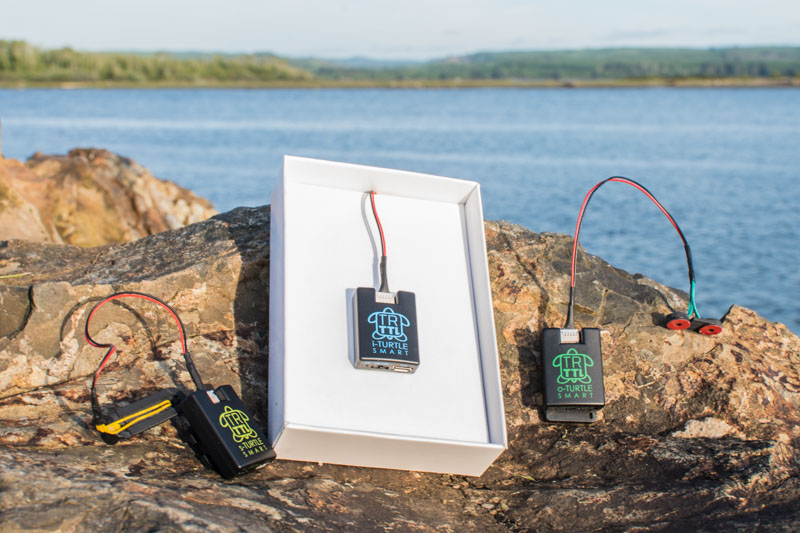
TTL Flash Triggers - TTL with Fiber Optic Cables
If you want to use TTL with fiber optic cables and you don't have a pop-up flash, then you will need a TTL flash trigger. TTL flash triggers vary in quality, but they will output an LED signal that varies in strength based on what your camera "thinks" the flash power should be. When your strobe is in TTL mode, it will be able to decipher from the LED signal how much power to output. TTL flash triggers fire faster than cameras that use pop-up flash for TTL. Isotta makes high quality TTL flash triggers that are optional with many of their housings.
TTL with Pop-up Flashes - TTL with Fiber Optic Cables
If you have a compact camer with a pop-up flash, then you're in luck! Pop-up flashes tend to produce fairly accurate TTL results with strobes in TTL modes. However, they will have longer recycle times for the on-camera flash than using a TTL flash trigger. In fact, recycle times will increase when you put the camera in "fill-in flash" mode to use TTL on your strobe.
Is TTL or Manual Mode Better?
There is a common myth that the manual strobe exposure mode is better to use than TTL when shooting with strobes. With good TTL this is false. It's impossible to react to changes in lighting conditions and subject distance as quickly in manual mode as TTL does automatically. Therefor, you're going to get more accurate exposures in more of your shots in TTL. However, there are some situations where you may want to take your time composing and the lighting situation may call for fined tuned exposures. This is when it is better to shoot in manual mode. And finally, if your TTL mode isn't accurate and the strobe is not firing accurately, then the manual exposure mode on the strobe can still be a better option. So if you are going to use TTL to make your shooting experience easier and focus on composition, reach out to Bluewater Photo to find out about the most accurate TTL.
An example of good TTL: Ikelite produces some of the best TTL converters on the market when combined with their electronic sync cords and their Ikelite brand strobes like the Ikelite DS 161. We spent a whole photoworkshop to Socorro, Mexico shooting with the Nikon Z7II in an Ikelite Z7II housing with an Ikelite TTL converter and Ikelite DS 161 strobes. We didn't touch our strobes for a single dive. We left them in TTL and enjoyed the action. Check out our trip report here.

The exposure on this whale shark was perfect because we used an Ikelite TTL converter with an Ikelite DS 161 strobe. The whale shark was photographed with the Nikon Z7II and the Nikon 8-15mm wide angle lens. 1/125, f/13, ISO 640

How to Fire a Strobe from a Distance
Firing a strobe from a distance can create a cool effect whether you are backlighting for a macro photo or illuminating a large shipwreck in a wide angle photo. One way to trigger a strobe from a distance is to use a long fiber optic cable or sync cord. However, there is an interesting "remote" triggering option for strobes called an optical "slave" trigger. An optical slave trigger can be built into a strobe or attached. It detects a light from your primary strobe(s) on your camera system when you fire your strobes and fires the remote strobe in sync with your strobes. This allows you to light up a scene with more light and angles than you could with strobes attached to your camera tray and arms.
RECOMMENDED ARTICLES
SUPPORT THE UNDERWATER PHOTOGRAPHY GUIDE:
The Best Service & Prices on u/w Photo Gear
 Visit Bluewater Photo & Video for all your underwater photography and video gear. Click, or call the team at (310) 633-5052 for expert advice!
Visit Bluewater Photo & Video for all your underwater photography and video gear. Click, or call the team at (310) 633-5052 for expert advice!
The Best Pricing, Service & Expert Advice to Book your Dive Trips
 Bluewater Travel is your full-service scuba travel agency. Let our expert advisers plan and book your next dive vacation. Run by divers, for divers.
Bluewater Travel is your full-service scuba travel agency. Let our expert advisers plan and book your next dive vacation. Run by divers, for divers.









